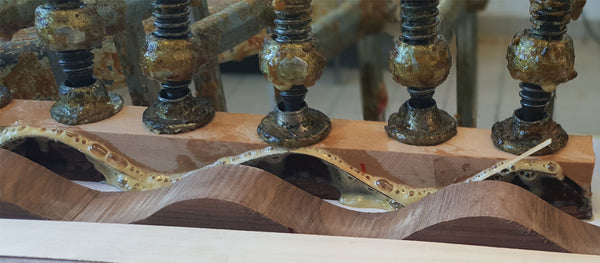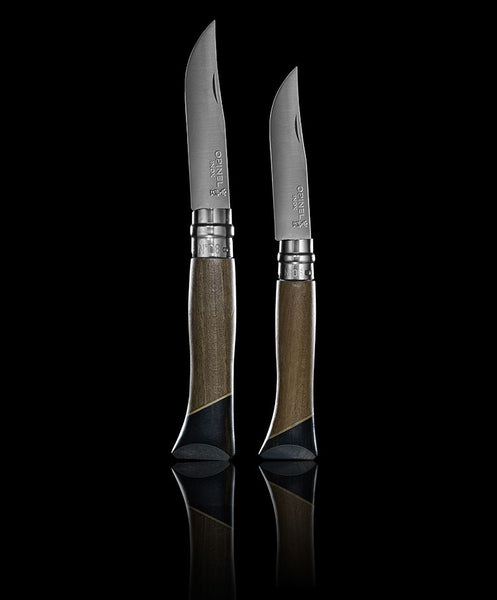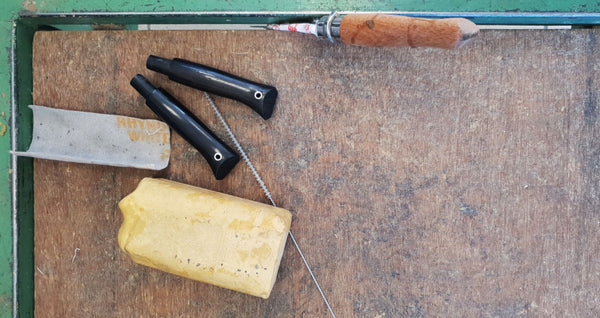Welcome into our wood workshop!
Name: Emeline
Surname: Ducrocq
City: Chambéry
Country: France
Occupation: Team leader in wood craftsmanship

Could you introduce yourself in a few words?
My name is Emeline Ducrocq, and I lead a team of artisan workers in wood. After training in tiling, I joined the Opinel team by way of my sister, who already worked for the company, and who had told me a lot about this position. Because I was working with my hands, being a tile maker, I was able to fit in well and adapt myself to the artisan wood workshop.
Can you explain the different stages of manufacturing a knife handle in the wood workshop?
First of all, we begin by selecting the exotic woods which we will cut, using a band saw, into wave shapes or angles of 30° or 40° depending on the model of the handle to be made. Then we use a traditional process of gluing and clamping under pressure, using an impact wrench. After waiting six hours for the glue to set, the blocks are finished with a band saw to remove the excess glue and clean the wood, so that they can then be shaped. The last step in the manufacture of the handle is buffing, which means that wax is applied by hand to the handle to give it a shiny and smooth appearance instead of a more traditional varnish.
Which one of these steps is your favourite? And why?
My favourite stage is the job of cutting the wood. Personally, I find it extremely interesting to handle the band saw, since we do not use a guide: we make everything freehand, by listening to our senses, which ensures that each handle created in this workshop will be unique.
What is special about the wood workshop?
It is the only workshop where everything is done by hand, except the shaping. Even our tools are, in some cases, manufactured in the traditional craftsman’s way. Another unusual feature of our workshop is that, despite the fact that it is a profession considered as masculine by many people, our team is, at the moment, entirely female.

Can you describe the handle you invented?

It is a walnut and ebony handle, with two veneers incorporating these two species. A 30° cut is made at the heel, then the walnut and ebony are assembled, glued and pressed. Once worked and shaped, the handle is finally buffed, just like all the other handles manufactured in this workshop.
How did you get the idea for this handle?
It was while I was looking for a way to limit the waste of the damaged ebony, that we were obliged to throw away, that I created this handle, which now allows us to recover this wood, which would have been scrapped. In addition, I found it interesting to associate the walnut, which is a soft wood, with ebony, a very dense species that, together, give this handle a lovely finish.
Did you have freedom in terms of creation?
I was entirely free to create this handle. I started from scratch, without any rules, whether for the choice of the woods or the cuts.

How does the process of creating a new handle work?
First of all, we choose the species of wood with which we wish to work, then we determine the cut we will make in our workshop. We then carry out lots of tests until we find a handle that we like, which will then be approved by the marketing department. Finally, we refine and adjust our handle to get the best possible result.
Finally, how would you describe your work in the artisan wood workshop in one word? Why?
Exciting. What I really like about working with wood at Opinel is the tremendous freedom we are given to create. Moreover, I find it very interesting to be able to work by hand with precious woods, which is what makes the workshop so wonderful.

